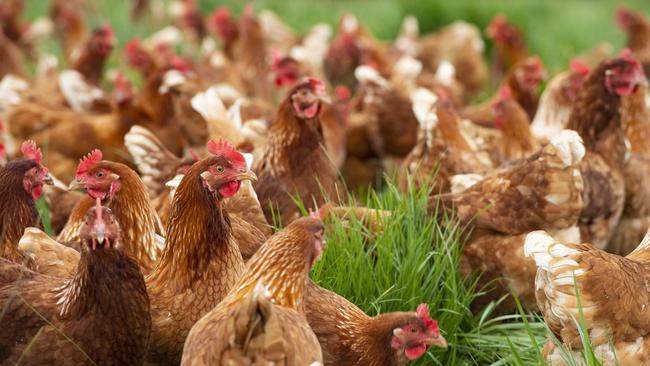High pathogenicity avian influenza hits New Zealand: first case, but not H5N1
New Zealand authorities have locked down Mainland Poultry’s Otago farm and culled two sheds of hens, as testing continues.

NZ authorities have locked down and depopulated free-range hens on a remote Otago poultry farm, after detecting the country’s first case of high pathogenicity avian influenza this week.
The outbreak is not caused by the H5N1 form of the virus, which has spread to every continent, except Australia, killing 500 million birds and infecting at least 26 mammalian species.
NZ Minister of Primary Industries reported the H7N6 variant they detected, was most likely spread to the flock from wild birds that carried a low pathogenicity form of the virus.
Once the flock was infected the virus then rapidly mutated into the highly pathogenic form, causing sudden and multiple chicken deaths.
Testing shows the strain is unrelated to the H7 strain of avian influenza identified in Australia earlier this year.
The ministry locked down the Otago property on Tuesday, before culling all birds in two sheds on Wednesday.
“There have been no signs of production loss or ill birds at Mainland Poultry’s five other properties to date, and we will keep monitoring closely,” Biosecurity New Zealand’s deputy director-general Stuart Anderson said.
“We acted swiftly on Tuesday, issuing a precautionary restricted placed notice for the property after some of its estimated 6000 birds died. Those restrictions stopped the movement of material on and off the farm.”
“Testing is normal in biosecurity responses where illness is identified. We acknowledge this is an extremely difficult time for the affected farmers, through no fault of their own, and we are working to support them.”
Mr Andersons says rigorous testing would need to continue over the coming days and weeks and Biosecurity New Zealand would take action as required.
“The incubation period for the virus is usually three to 14 days, with a possibility up to 21 days, so testing will continue over the next 2 to 3 weeks,” he said.
Mr Anderson reminded people the risk to human health remains low, and there are no concerns for food safety or wildlife.
“Avian influenza viruses are killed by cooking, so it remains safe to eat thoroughly cooked egg and poultry products,” Mr Anderson says.
“Raw eggs have always been considered a high-risk food. Our advice remains not to consume or serve raw eggs, especially to those with low or compromised immune systems, as the eggs may contain harmful pathogens.”
What is HPAI H7N6?
Avian influenza is a viral disease of birds found globally.
Virus strains are described as low pathogenicity (LPAI) or high pathogenicity (HPAI).
The H7N6 strain is closely related to LPAI strains present in wild birds in New Zealand.
While this is a high pathogenic strain, it is not the HPAI H5N1 strain that has caused deaths in poultry, wild birds, and mammals overseas. New Zealand remains free of HPAI H5N1.
How did it get into New Zealand?
The Ministry believes the Otago case may have happened by what is known as a spillover event. This is when free-range laying hens foraging outside are exposed to the low pathogenicity virus from wild waterfowl, which has then mutated into HPAI.
The government has an active surveillance program for LPAI and test around 2000 samples from wild birds each year.
How has NZ been preparing for the arrival of bird flu?
Biosecurity New Zealand has been preparing for an event like this for some time.
International experience with avian influenza has shown the HPAI H7 strains can be eradicated quickly and successfully.
The Ministry is working closely with industry partners in the poultry and egg sectors, as well as the NZ Department of Conservation, and Ministry of Health to prepare for H5N1.
HPAI symptoms
In chickens and turkeys the most obvious sign is sudden death of multiple birds within a flock.
As well as sudden mortality, signs for HPAI can include:
– lethargy or a reluctance to move
– reduced appetite
– swelling around the head and neck
– droopy head, paralysis, or incoordination (neurological signs)
– darkened or swollen face, discolouration of wattles and combs
– coughing, panting, and nasal discharge
– unexpected drop in egg production
– bruising or haemorrhages, especially of the legs
– watery or green diarrhoea
– a silent or “too quiet” poultry shed.
In domesticated waterfowl, such as ducks and geese HPAI generally has lower mortality.
Signs are usually related to the nervous system, such as involuntary movement, lack of co-ordination, blindness, and trembling.
In Australia if you see sick or dead birds you should talk to your local vet or call the Emergency Animal Disease Hotline on 1800 675 888.




